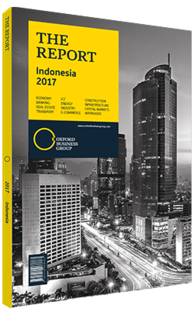President Joko Widodo, on charting Indonesia’s path forward: Viewpoint

In the beginning of 2016 Indonesia experienced a pleasant surprise. Although the stock market in China had declined significantly, triggering circuit-breakers, even as the stock market in the US declined and the price of crude oil plummeted, our currency, the rupiah, was stable and our stock-market went down only slightly. Our fourth-quarter GDP growth exceeded the forecasts of all 23 forecasting institutions. The consensus forecast was 4.8% year-on-year (y-o-y) growth. Instead, we achieved growth of 5.03% y-o-y in the fourth quarter of 2015. What does this mean? Where are we now? What is the direction of progress in Indonesia?
In August of 2015 I reshuffled my Cabinet to bring in more technocrats and professionals. I believe many of you would agree that the result has been fairly positive. Moreover, in 2016 a greater amount of infrastructure is being built than at any given time in the last 15 years. Overall, I am cautiously optimistic that we have reached a measure of economic stability. However, we still have a long way to go and are not satisfied. Our investment climate is still not conducive enough, and we still need to deregulate further.
We are still behind neighbouring countries in terms of the number of trade agreements that we have. We have announced the broadest lifting of investment restrictions in more than 10 years. What we call our “negative list” defines the sectors that are closed to foreign investment. In 2016 we revised our negative list so that four sectors which were completely closed to foreign investors are now open to foreign investment; 12 sectors in which investors from overseas were allowed to own only minority stakes are now open to foreign investors so they can own majority stakes.
Yet we are only at the beginning. We will continue to simplify the business environment and to open up our economy. We will continue to modernise our rules and regulations. There are still too many excessive restrictions, permits and licences that we need to get rid of. Today, we must do the same in emerging markets. Since the beginning of 2016, stock markets around the world appear to be breaking down. We are seeing signs of economic weakness all around the world. Many major emerging markets continue to be in a downturn.
Moreover, there are well-founded fears that the downturn in the emerging markets may spill over to the developed economies. I believe that what we are seeing today are the limits to financial engineering. The world’s central banks must continue to work hard to provide global markets with the liquidity that they need. It is my view that governments and corporations around the world can no longer delay in taking the concrete and fundamental actions which we all know are required. Governments must implement structural reforms. Companies and businesses must invest for the future. Together, we must provide for the long-term, and not only focus on short-term measures that are popular and easy. There are no shortcuts.
The times now are different than they were a few decades ago. Previously the threat was inflation, but today the threat is deflation. Before, the mistake was excessive taxation, while today the mistake may be insufficient taxation, especially in emerging markets. In many countries, poor fiscal policy may be depriving the state of the resources to invest in our future, our children, our young populations and our infrastructure. Bold and honest leadership is needed now more than ever. We are ready to do our part, and we invite foreign investment to join us in doing what is bold, what is farsighted and what is right.
Excerpt from a speech at the US-ASEAN Business Council conference “Asia’s Best Kept Secret: The Asean Economic Community” on February 17, 2016.
You have reached the limit of premium articles you can view for free.
Choose from the options below to purchase print or digital editions of our Reports. You can also purchase a website subscription giving you unlimited access to all of our Reports online for 12 months.
If you have already purchased this Report or have a website subscription, please login to continue.

